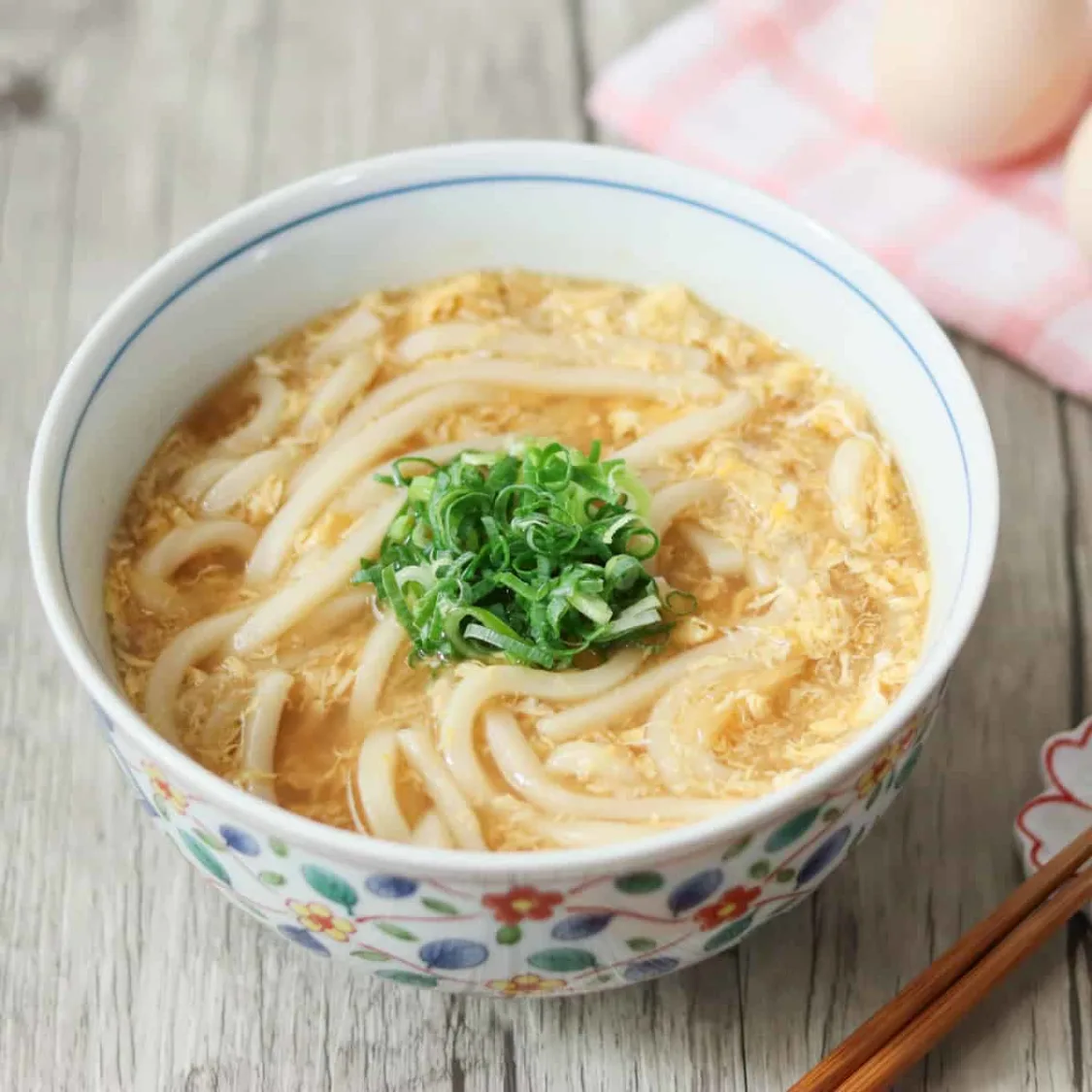
Tamagotoji Udon
Udon noodles in hot soup with egg.
Ingredients
- •Udon noodles
- •Eggs
- •Dashi
- •Green onions
- •Kamaboko
Instructions
Heat Soup
Warm dashi and seasonings
Add Egg
Pour beaten egg over hot noodles
Tamagotoji Udon is a comforting and delicious Japanese dish that features udon noodles in a hot, savory soup topped with a delicate egg mixture. This dish is perfect for a quick and satisfying meal, especially on a chilly day.
The history of Tamagotoji Udon is rooted in traditional Japanese cuisine, where simplicity and flavor are key. Udon noodles have been a staple in Japanese households for centuries, and the addition of egg to the broth creates a rich and velvety texture that enhances the overall experience.
To make Tamagotoji Udon, start by heating a pot of dashi, which is a Japanese soup stock made from kombu (kelp) and bonito flakes. Once the dashi is warm, season it with soy sauce and mirin to taste. Add the udon noodles to the pot and cook until they are tender and heated through. In a separate bowl, beat the eggs and then slowly pour them over the hot noodles, allowing the eggs to cook gently in the residual heat. This method ensures that the eggs remain soft and slightly runny, creating a luscious topping for the noodles.
One of the great things about Tamagotoji Udon is its versatility. You can customize the dish by adding various toppings such as sliced green onions, kamaboko (fish cake), or even a sprinkle of shichimi togarashi (Japanese seven-spice blend) for a bit of heat. Some people also like to add vegetables like spinach or mushrooms to make the dish more nutritious.
In Japan, Tamagotoji Udon is often served in a large bowl with chopsticks and a spoon. The combination of the chewy udon noodles and the silky egg mixture makes for a comforting and satisfying meal. It's a popular dish in both homes and restaurants, enjoyed by people of all ages.
While Tamagotoji Udon is a delicious and hearty dish, it's important to be mindful of its nutritional content. The dish can be high in sodium due to the dashi and soy sauce, so it's best to enjoy it in moderation. Additionally, those with dietary restrictions should check the ingredients of the dashi and udon noodles, as some may contain gluten or other allergens.
